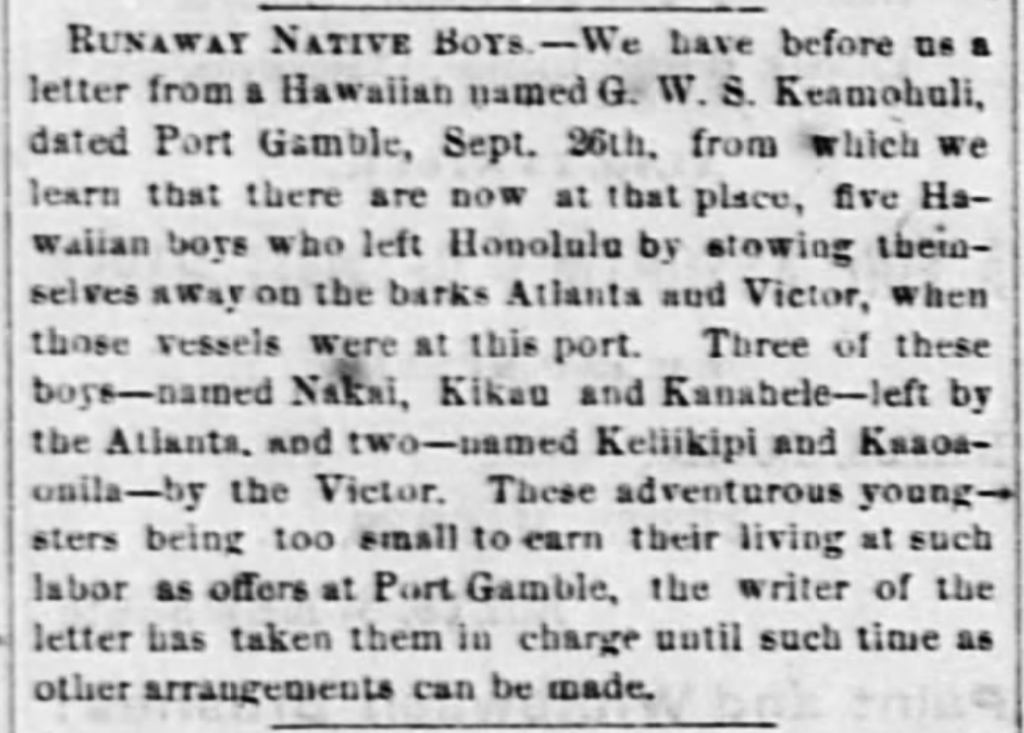Runaway Native Boys.–We have before us a letter from a Hawaiian named G. W. S. Keamohuli, dated Port Gamble, Sept. 26th, from which we learn that there are now at that place, five Hawaiian boys who left Honolulu by stowing themselves away on the barks Atlanta and Victor, when those vessels were at this port. Three of these boys–named Nakai, Kikau and Kanahele–left by the Atlanta, and two–named Keliikipi and Kaaoaouila–by the Victor. These adventurous youngsters being too small to earn their living at such labor as offers at Port Gamble, the writer of the letter has taken them in charge until such time as other arrangements can be made.
(Hawaiian Gazette, 11/7/1877, p. 3)


